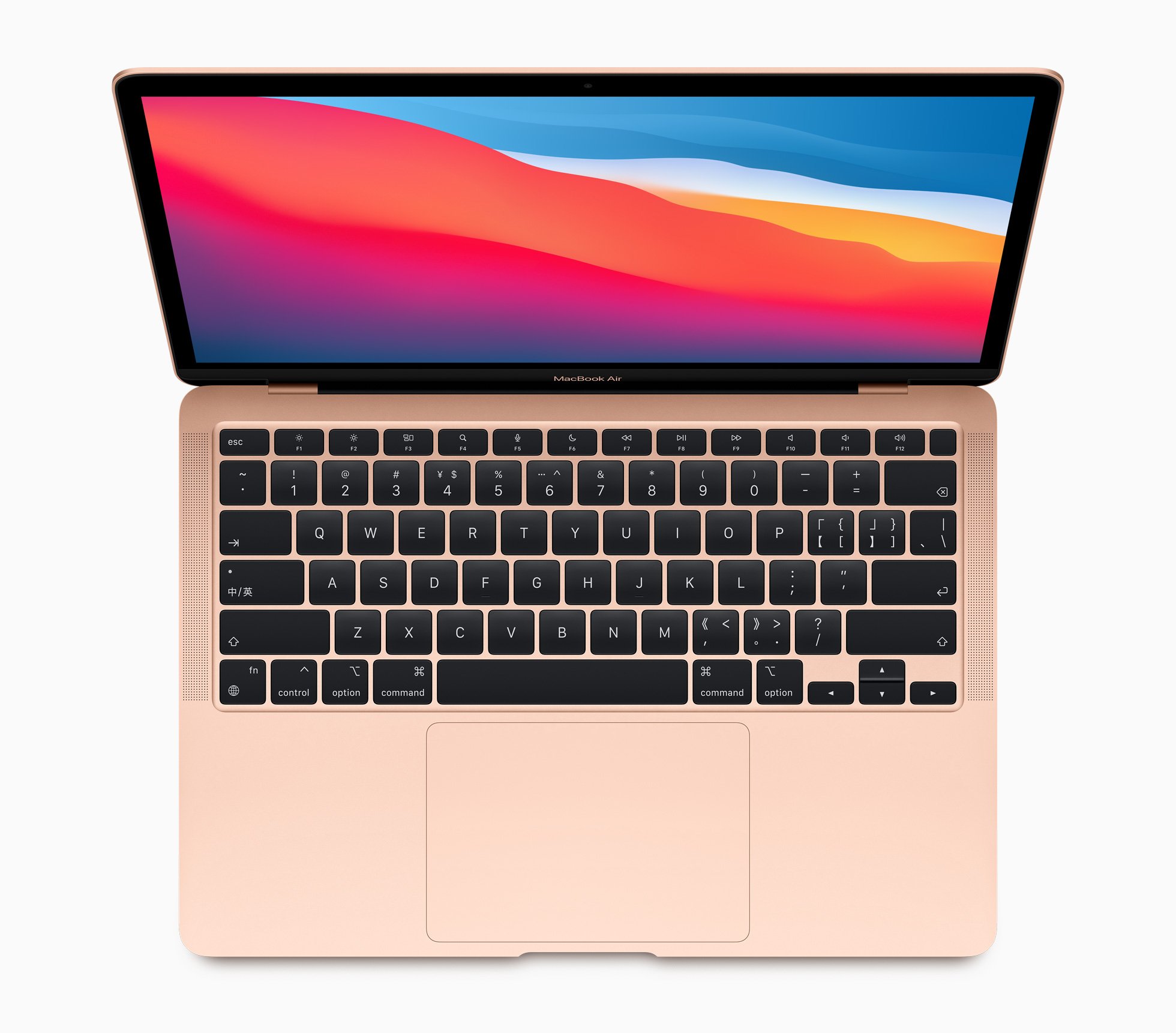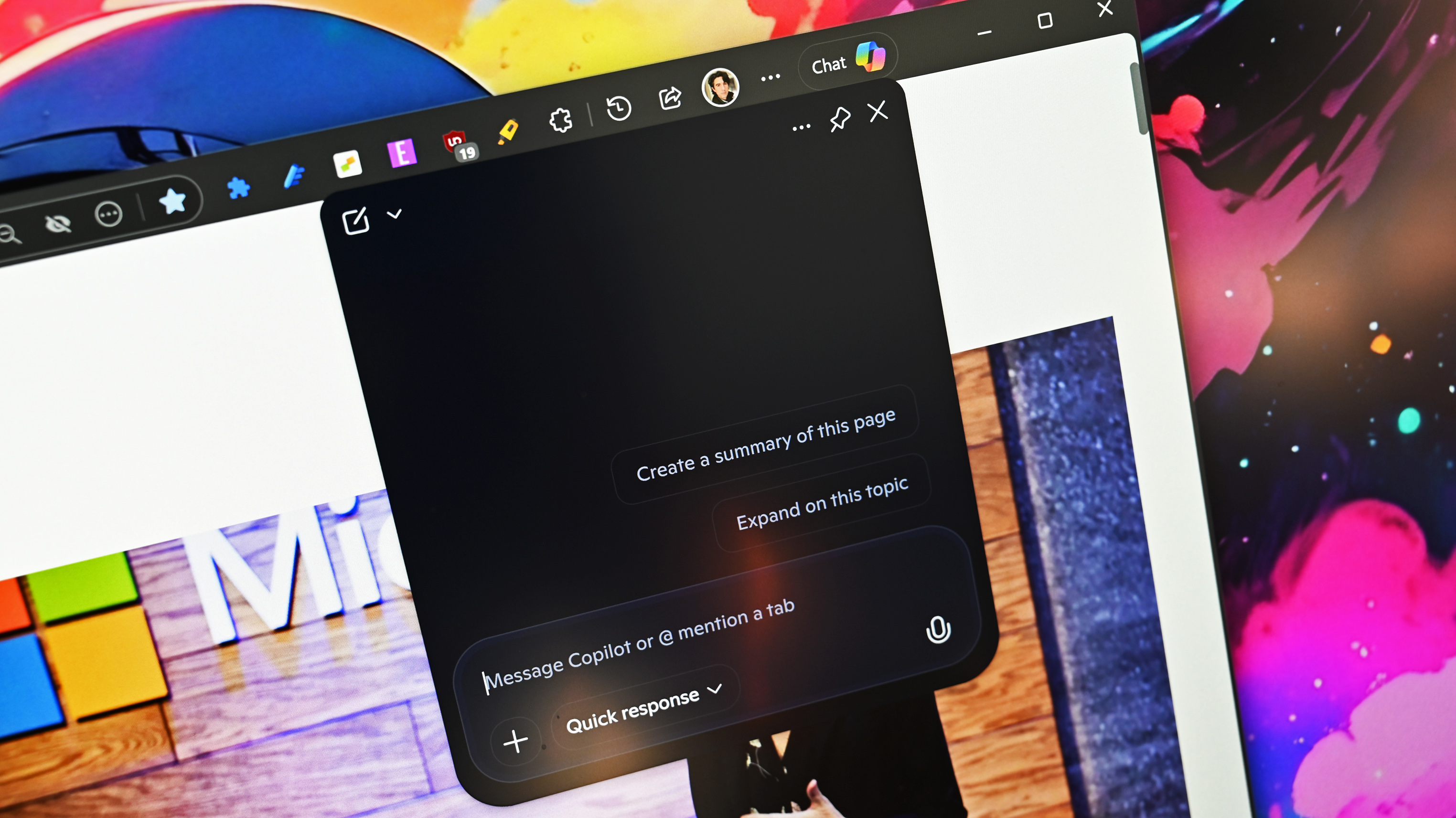Apple brings the heat with its M1 ARM processor, but takes different direction than Microsoft
Apple is joining Microsoft and Google in embracing ARM for computers and not just phones. Here are five takeaways from today's announcement.

Apple today gave its typical launch event for refreshes to its existing MacBook line of laptops. However, this year was more significant, as Apple finally unveiled its octa-core M1 processor based on the current A14, but with a little extra oomph behind it.
Along with the announcement came the usual hyperbole without any semblance of data or details on what it is being compared to the M1. But there is also little doubt that Apple can deliver some impressive hardware, and the M1 is undoubtedly going to be a fast chip.
Here are a few takeaways from Apple's event and what it means for the broader mobile PC market.
1. New chip, but same old laptop
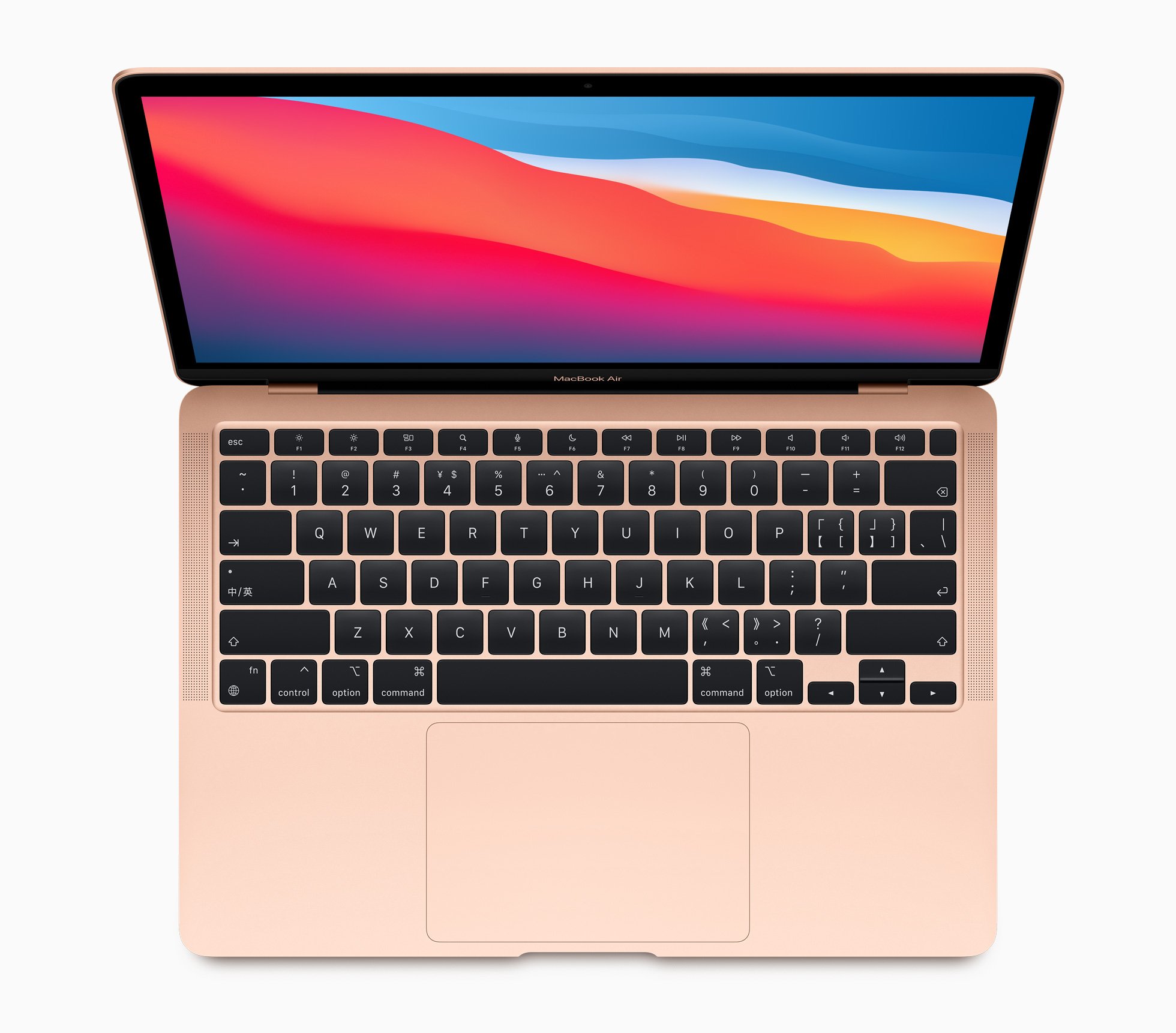
One of the immediate observations from Apple's new MacBook Air and MacBook Pro 13 is … they're the same laptops as last year.
That's not a critique, however. Apple feels its chips are powerful enough to beat last year's offerings from Intel without disappointing customers. It remains to be seen if that is true, but the strategy is a straightforward swap out. It plays to Apple's strengths.
But Windows on ARM has taken a radically different approach. With a smaller chipset and no need for fans, Microsoft and its partners have used the technology to push the boundary of modern PCs. Surface Pro X is like an iPad Pro that runs Windows; Lenovo's Flex 5G gets 15 hours of battery life and is the first PC in the world with full 5G; Samsung's Galaxy Book S is ridiculously thin and light, etc. Even HoloLens 2 runs on ARM.
A PC like Surface Pro X cannot be made with Intel chips at this time. That is why Microsoft made a whole new device, which is overall better than Surface Pro 7. Microsoft could have gone the lazier route and just made a Surface Pro 7 with ARM, but instead, they chose to deliver a different (and improved) experience.
All the latest news, reviews, and guides for Windows and Xbox diehards.
Neither strategy is better or worse than the other, but it is a difference that is worth noting.
2. Apple M1: But how much faster?
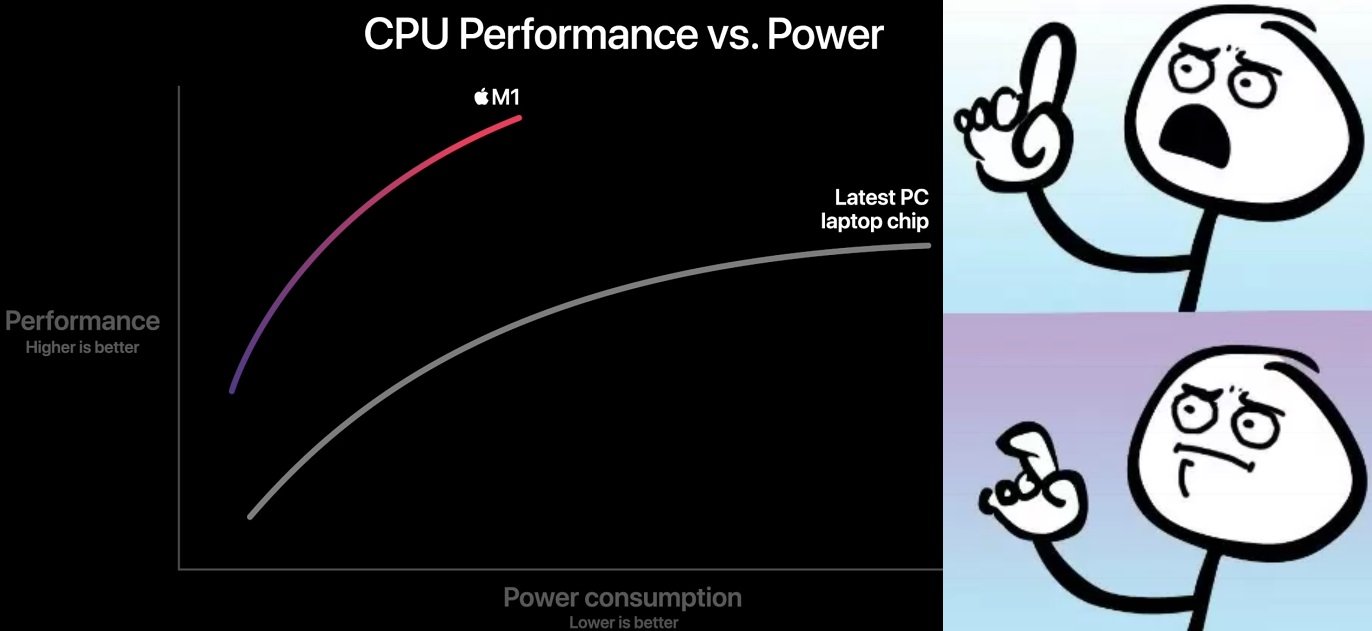
Apple played fast and loose with numbers and comparisons between its M1 chip and what we presume is the latest from Intel (and you can't forget AMD).
Apple is hilariously vague in its claims, showing charts comparing its CPU and GPU to the "latest PC laptop chip" (whatever that means). The charts have simple labels of "performance" and "power consumption" with no X or Y-axis values.
Of course, the Apple chip is higher on the chart and has a more pleasing trajectory, but anyone who works with numbers knows that graph is entirely meaningless. The difference could be massive, or it could be tiny – we don't know because not only do we not see the comparison chip, but we don't know how they performed on the test (and which test) or what the actual figures are. That's not science, that's marketing.
I do not doubt Apple's M1 is fast and can compete with Intel 10th Gen, but that is just a benefit of the doubt and not based on any data.
3. 4G LTE and 5G are nowhere to be seen

Even though Apple ships its iPads with an option for LTE and its new iPhones are 5G-based, these new ARM-based MacBooks do not offer either. It's an odd move, as you would think, with so much extra battery life, improved performance, and the ability to run iOS apps (built for cellular, ahem), Apple would have added non-Wi-Fi connectivity.
Interestingly, Apple's strategy is the exact opposite of Microsoft and its partners. The whole premise of "Always Connected PCs" that run on ARM is, well, the always-connected bit.
Sure, you can buy Surface Pro X and never use cellular data on it, but the value of that device is diminished. The ability to seamlessly be on the internet all the time is the main reason I use ARM-based Windows PCs.
4. Windows on ARM PCs are vastly different from Apple

Apple knows its audience: self-proclaimed "creatives" who focus on video, multimedia, photos, and some engineering and software development (usually for Apple apps). What's not its strong suit? Business and productivity.
Windows 10 on ARM PCs, generally speaking, support inking, improved battery life, touch displays, and offer 4G or 5G always-on connectivity.
By comparison, Apple's MacBooks with M1 only do one of those things: improved battery life (and likely performance).
That is fine, as many people may not want a touch screen, pen support, or LTE. But for anyone buying a Surface Pro X, those are the reasons.
Of course, with Apple merging everything, perhaps we'll get an iPad Pro that can run macOS apps, completing the strategy. That seems probable.
5. Apple embracing ARM validates Microsoft and Windows on ARM
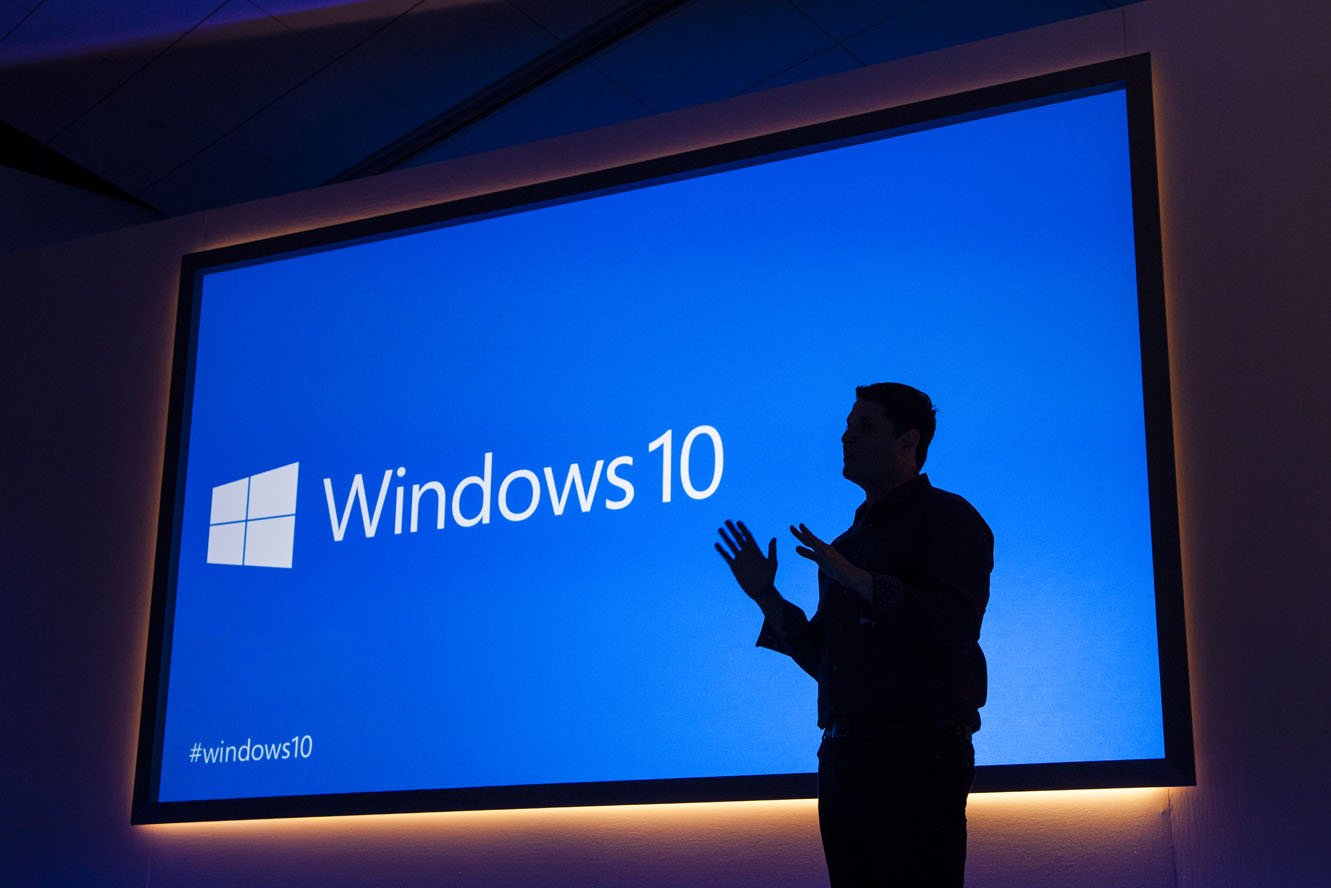
Apple implementing ARM-based silicon in its premier laptops won't directly impact Windows on ARM apps. There may be some obscure dev tools that overlap, but for the most part, Apple's announcement does not affect Microsoft.
But there is a more general, almost meta benefit: ARM is justified for use in computers.
Ever since Microsoft announced Windows on ARM support, many naysayers thought it was a fad or an experiment for PC makers. It is not like there isn't some truth to it as NVIDIA Tegra was a thing for a few years with Windows 8 tablet PCs until it wasn't.
Apple embracing ARM for PC does create interest in the ARM architecture beyond smartphone usage. It helps generate consumer interest and knowledge about technology. And it is probably not a stretch to think some Windows PC makers may be eyeing some new laptops to compete with the MacBook Air – after all, they have already been doing that for years.
Today's announcement from Apple is a welcome one for anyone who enjoys "silicon diversity." Google recently updated Chrome OS to support ARM, too, and it is no coincidence that Microsoft was the first four years ago.
Apple and Intel are now in a profoundly serious battle with Qualcomm, who will have to go nuclear on making a competitive chip to stay relevant. It also puts pressure on PC makers to price ARM laptops more competitively.
Let's hope that happens soon because it is clear ARM will play a significant role in mobile computing.
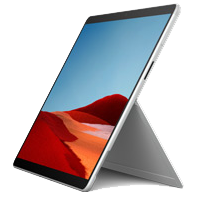
The thinnest and lightest Surface Pro available – now better
Now available
Refreshed for late 2020 is the new Surface Pro X with the SQ2 processor. A faster CPU, more powerful GPU, improved battery life, x64 app emulation in November (Insiders), and now in platinum, there is a lot to like here. You can even now pick multiple colors for the Signature Keyboard with Slim Pen Bundle. Preorder now; get it for October 13th.
Daniel Rubino is the Editor-in-Chief of Windows Central. He is also the head reviewer, podcast co-host, and lead analyst. He has been covering Microsoft since 2007, when this site was called WMExperts (and later Windows Phone Central). His interests include Windows, laptops, next-gen computing, and wearable tech. He has reviewed laptops for over 10 years and is particularly fond of Qualcomm processors, new form factors, and thin-and-light PCs. Before all this tech stuff, he worked on a Ph.D. in linguistics studying brain and syntax, performed polysomnographs in NYC, and was a motion-picture operator for 17 years.
